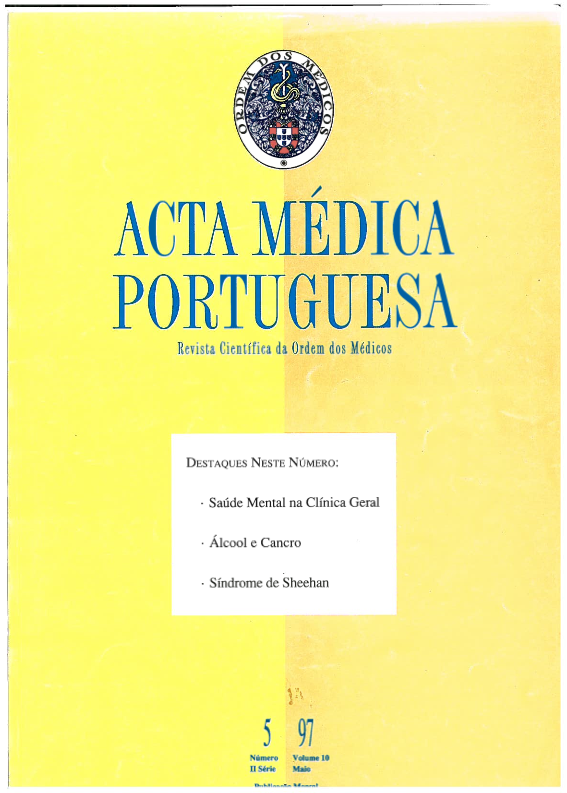Glutatião reduzido e oxidado da placenta na gravidez complicada com preeclâmpsia.
DOI:
https://doi.org/10.20344/amp.2432Resumo
Significative enhancement of free radical formation (FRO) in vivo is an important feature of hypertensive disorders of pregnancy (HDP), namely preeclampsia (PIH). The latest investigations about the pathology of HDP, showed the contribution of placental circulation to the development and evolution of such disease. The placental bed can be a potential source of FRO or activation of cells that can produce FRO. Glutathione, is an important molecule for cellular protection against damage, is a cofactor of many enzymes, in particular, for the glutathione peroxidase of the placental tissue; this enzyme in the placenta bed prevent the production of thromboxan and lipoperoxides; the latter are potentially damaging to the endothelium cells and can cause vasoconstriction, the most important feature of PIH. The activity of that enzyme is deficient in PIH. We studied, by fluorometric assay, the concentrations of the two states of glutathione in placental homogenates (PLH) from pregnant women without pathology (PWN) and from pregnant women with PIH (PWPIH). The data showed significant low concentrations in the PLH of the two states of glutathione in the PWN against high concentrations of this molecule in the PLH from PWPIH. This feature can result from a deficient user of the glutathione by the cellular mechanism for prevention against oxidative factors. In addition, our study shows a biochemical marker that is suggestive that the placental bed is a potential source of FRO production in PIH.Downloads
Downloads
Como Citar
Edição
Secção
Licença
Todos os artigos publicados na AMP são de acesso aberto e cumprem os requisitos das agências de financiamento ou instituições académicas. Relativamente à utilização por terceiros a AMP rege-se pelos termos da licença Creative Commons ‘Atribuição – Uso Não-Comercial – (CC-BY-NC)’.
É da responsabilidade do autor obter permissão para reproduzir figuras, tabelas, etc., de outras publicações. Após a aceitação de um artigo, os autores serão convidados a preencher uma “Declaração de Responsabilidade Autoral e Partilha de Direitos de Autor “(http://www.actamedicaportuguesa.com/info/AMP-NormasPublicacao.pdf) e a “Declaração de Potenciais Conflitos de Interesse” (http://www.icmje.org/conflicts-of-interest) do ICMJE. Será enviado um e-mail ao autor correspondente, confirmando a receção do manuscrito.
Após a publicação, os autores ficam autorizados a disponibilizar os seus artigos em repositórios das suas instituições de origem, desde que mencionem sempre onde foram publicados e de acordo com a licença Creative Commons









